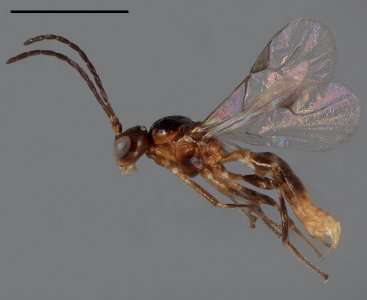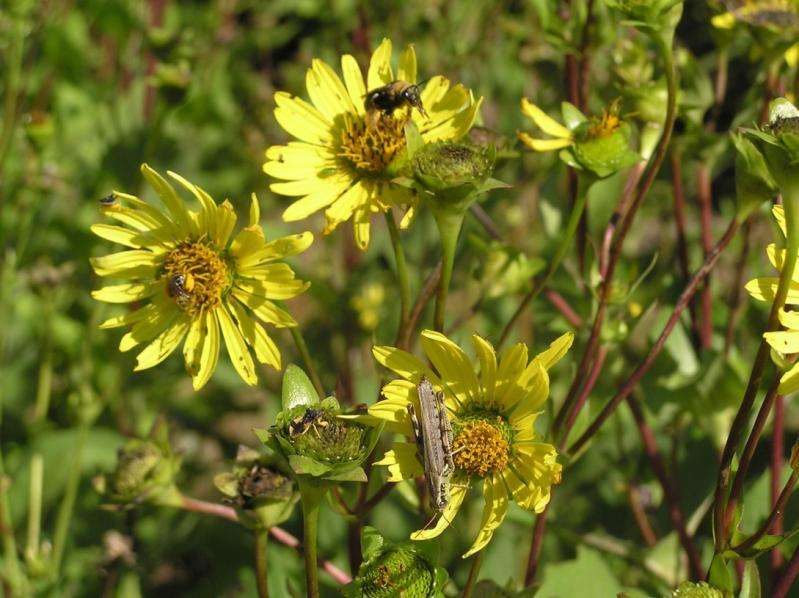Plant scientists identify aphid-destroying wasps in cup plants

Entomologists will find it easier to identify parasitic wasps and their host aphids, thanks to the work of entomologist Paul Johnson and forage breeder Arvid Boe. Both are professors in the Department of Agronomy, Horticulture and Plant Science.
Their investigation began when Boe showed Johnson a photo of a cup plant flower teaming with insects, including a large colony of bright red aphids. Boe grows cup plants at two locations near Brookings to evaluate the plant—a member of the sunflower family—as a potential feedstock for biofuel production. The project, which is done in collaboration with the University of Wisconsin-Madison, is funded by the Sun Grant Initiative.
"What these researchers are uncovering about the agronomics of cup plant, as well as the insects that affect them, will help us decide how they can be integrated into a bioenergy cropping system," said Vance Owens, director of the North Central Regional Sun Grant Center.
"People have not looked closely at these insects—we brought everything together in understanding the biology of this one genus of parasitic wasps," Johnson said. He collaborated with research entomologist Robert Kula of the Systemic Entomology Laboratory, U.S. Department of Agriculture Agricultural Research Service.
The work also involved entomologist Thelma Heidel-Baker, then at Purdue University, who supplied specimens from Indiana. The South Dakota researchers reared two species of parasitic wasps from the aphids, while Heidel-Baker reared five species.
"Now we know that all the wasps of the genus Acanthocaudus are specialists on different species of aphids on different host plants," Johnson said. The taxonomy of each wasp species now correlates with the host aphids and their plant hosts.

A parasitic wasp identified from Uroleucon aphids in South Dakota cup plants, for instance, had characteristics similar to specimens of a known species, A. tissoti, found in British Columbia and Florida. Kula ascertained that the species from South Dakota was, indeed, A. tissoti.
Heidel-Baker reared a new related species of parasitic wasp, now called A. bicolor, on a different host Uroleucon aphid that feeds on asters. Their findings were published in the January 2017 issue of Zootaxa.
Parasitic wasps protect the plants against aphid infestations, Johnson explained as he described wasp-aphid interaction on cup plants.
What begins as a few dozen aphids per plant in mid-July can become as many as 800 aphids per leaf by the end of July or the first week of August. "The aphids feed on the juices, which can cause deformities and general weakness of the plant," Johnson said.
The parasitic wasps sting the aphids to inject their eggs into the aphids' bodies.As these eggs hatch, the larvae feed internally on the aphids, he explained. By the second week in August, nearly 98 percent of the aphids had been parasitized by wasps.
"When the larvae become adults, they chew a hole and pop out of the aphids," Johnson said. "It's like an alien movie."
The parasitic wasps are beneficial to the cup plant. "If you have wasps around, you don't need to spray the cup plant," Johnson said.
Journal information: Zootaxa
Provided by South Dakota State University



















